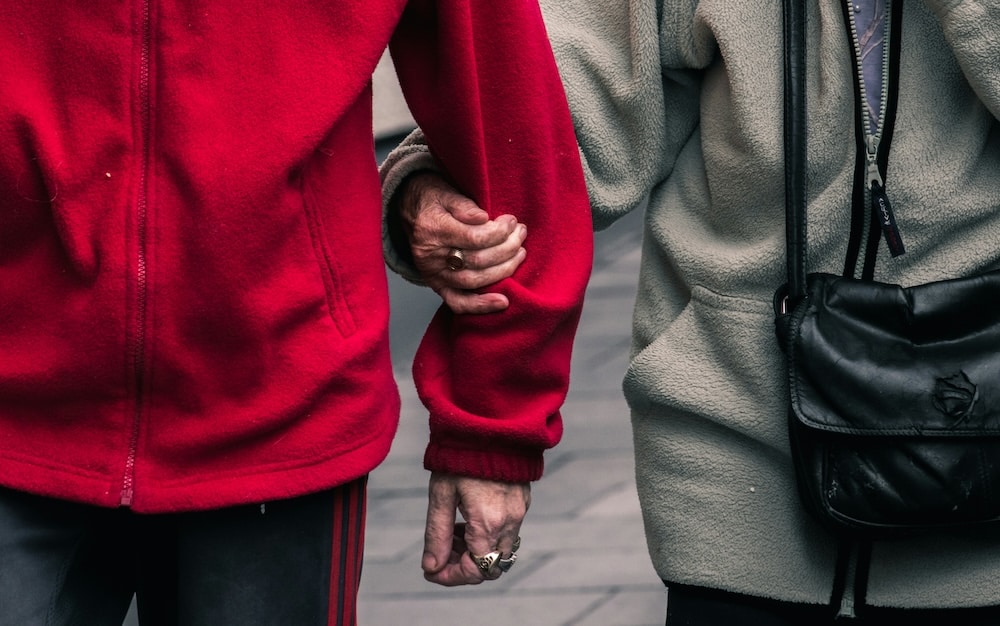As discussed in part one of this exploration, trauma bonds are complicated- both psychologically and biologically. You do not get into them by “choice” and you do not stay stuck in them by choice. It is a slow process that changes the victim in a way that makes it feel impossible to leave. These relationships can lead to new or worsening mental health conditions, can destroy self-esteem, and can create unhealthy coping mechanisms. But trauma bonds can be healed from. Getting appropriate therapy and connecting to safe support is a crucial aspect of recovering from trauma bonds. In this post we’ll explore how to break a trauma bond and the actions you can take to start healing.
How do Trauma Bonds Change How You Think, Feel, or Act?
When your psychological picture changes, so does your functioning. Trauma bonds generate so much fear that they can disrupt your nervous system. A healthy system exists mostly in a state of rest and then shifts into fight-or-flight only when exposed to a threat. But when the threat is the actual attachment bond in your relationship, it triggers you over and over. You end up stuck in this state. This dysregulation can throw everything out of sync. It makes you no longer feel safe or settled. The discomfort it brings can lead to new, maladaptive coping mechanisms.
These changes are not a choice- they are a form of forced coping to survive a hostile, inescapable environment. We need to escape from turmoil, even if only temporarily. When we can’t escape it in our external environment, we develop defense mechanisms to escape it in our internal environment. We begin to think and act in ways that are often not accurate and not rational, but they serve the function of temporarily relieving you of the unending pain caused by your trauma bond.
Your thinking is greatly affected by a trauma bond in the following ways:
-
You might downplay or excuse the abuse. You justify and defend your partner’s abusive actions.
-
You might take the blame for the abuser’s anger. You think they’re only angry because you did something wrong, and you must make them happy again.
-
You may fixate on the “good” things your partner does. You gaslight yourself that the abuse isn’t that bad. You think you must be making it up or exaggerating.
-
You may also use thoughts and beliefs around you to prevent you from seeing that it’s time to leave.
-
Religious teachings that you must forgive and endure.
-
Social messages that say ending a relationship is a form of failure. You’ve got to make it work by any means necessary.
-
Being alone is worse than being with an abuser.
-
It’s your responsibility alone to figure out how to make things right.
-
-
You can have foggy thinking, become disorganized and disoriented, or dissociate.
-
You may believe you are doing the “right thing” when the abuser finally does show signs of reconciliation and calm.
-
You might really think this is love because of how “connected” you are.
How you feel is changed, including:
-
You might fear abandonment so much that you’re willing to tolerate anything they do.
-
You might bounce between loving and hating the abuser. This is so confusing and uncomfortable that you do unhealthy things to cope with the hate.
-
You may try to seek safety by doing anything your abuser wants. You’ll convince yourself that you must please them to keep the abuse away. Then, you’ll numb yourself when the abuse happens again anyway.
-
You may feel so much shame that you believe you deserve punishment.
-
You might really feel unlovable, so any bits of love you get from them is something you should be grateful for.
How you act also changes, in ways such as:
-
You might isolate yourself from support systems. Your partner might force you, or you might do it for another reason- to avoid hearing their negative thoughts or facing the truth.
-
You may focus too much on changing or punishing yourself. You do it to feel in control of the relationship or to feel calm and loved.
-
You may develop harmful coping methods. They might become the new source of your pain and suffering.

You may ruminate or have obsessive thoughts about your relationship or yourself. You may expect harm at any time. This leads to hypervigilance – a constant state of being on edge.
You can have so much stress that it causes an anxiety disorder. You’re always filled with worry and fear. You may ruminate or have obsessive thoughts about your relationship or yourself. You may expect harm at any time. This leads to hypervigilance – a constant state of being on edge. You may always fear the worst. This is true even for things unrelated to your relationship. If you try to soothe this anxiety with compulsive behaviors, you could develop obsessive-compulsive disorder.
The stress and overwhelm can feel so out of control, that you may try to find relief or safety through other means. You may begin to overuse or abuse substances to find calm. You may begin using self-harm to relieve yourself of tension or despair. You may develop an unhealthy relationship with food or exercise; you might use them to soothe yourself or to find control in your life. You may even develop dissociation or disconnect to feel safe, or numb. Your emotions may become muted. You may check out from the present. At the most extreme, this can lead to dissociative disorders.
So much anxiety is very overwhelming. It can lead to depression or mood disorders. High stress might trigger hypomania, manic episodes, or even psychosis. It can pull you out of a safe reality. The stress chemicals cause huge mood crashes. These crashes include intense lows, maybe even suicidal thoughts, behaviors, or attempts. Your mood can make it hard for you to make good choices. It makes it hard for you to care for yourself. This leads to further self-neglect.
So much anxiety is very overwhelming. It can lead to depression or mood disorders. High stress might trigger hypomania, manic episodes, or even psychosis. It can pull you out of a safe reality.
For many people, the trauma from a trauma bond can lead to post-traumatic stress disorder. You may have flashbacks about abuse from your partner. You may have nightmares. And you may avoid things to prevent reminders of your trauma. Your emotions may become unpredictable- you could swing between extreme emotions and numbness. You may lose the ability to tell what is safe and what isn’t. This will cripple your ability to protect yourself from harm. You may develop deep, intense shame. It will make you see yourself as broken and deserving of all your pain. Your natural fear responses also become more helpless with each experience of abuse.
You’ve been exposed to more and more stress, and you’ve tried to explain it away or call it normal; this makes you comfortable with that stress. This becomes a challenge over time, as the relationship may feel familiar, not dangerous. Leaving the relationship is hard. Being alone, or even being with a safe future partner, may feel so strange that you can’t cope with it. You can adapt to your fear and overwhelm so much that it feels safe to you. This can lead you to seek out stressful experiences. This always makes you more likely to return to the trauma bond partner, even years after the relationship ends.

How to Break a Trauma Bond: What You Need to Break Free and Heal
For most people, escaping a trauma bond requires therapy. It also requires social support. This kind of relationship can cause deep harm. It can be so bad that people may not even recognize themselves on the other side. They may have become so used to their symptoms that they don’t even notice them anymore. The chaos can feel so natural that you’ve lost sight of what you want and what you need. Additionally, leaving a trauma bond can cause withdrawal-like symptoms. These include panic, anxiety, and discomfort. They also include loneliness, longing, and more. People benefit from having a safe person teach them how to cope.
Your brain and your nervous system likely adapted to the harm in the trauma bond. But the good news is that you can rewire yourself to fit the new, safe environment away from your harmful partner. The cravings for them, the withdrawal symptoms, and the distress of leaving the relationship won’t last. You can learn to cope with the pain. You can heal your attachment style. Then, you can build healthier relationships in the future.
Healing from trauma isn’t a to-do list. There aren’t steps you can follow to heal quickly or easily. Healing like this is complex. It’s individual and requires many choices to stay away from your bond partner. Many people feel unsafe after leaving the relationship; they may do self-destructive or unhelpful things that make them fear being alone. A trained provider can help you navigate this stage. They can help you avoid as much harm as possible.
You can’t reduce trauma therapy to a one-size-fits-all approach. However, a common pattern of change emerges through effective care:
Safety and Stabilization
This is the treatment phase when you seek safety and routine. It includes leaving your partner, meeting your basic needs, like housing, food, and finances, and learning to feel safe in your body and world. This phase can last a long time, depending on how much care access you have and the nearby resources in your community.
Remembrance and Mourning
This phase is about accepting what has happened to you. It is about feeling the grief and anger from your relationship. This can involve creating a story of your experiences. It means facing your memories, and it’s about handling tough emotions and finding meaning in what you’ve endured. You’re reorganizing how the story sits in your mind and how to notice patterns that play out in your life
Reconnection and Integration
In this phase, the goal is to create a new self and build hope. This includes making healthier relationships. You will also improve your self-esteem and live your life in a more positive and meaningful way. Your trauma no longer controls or defines you. It’s something you experienced. You’re moving closer to healing from it.

A common pattern of change emerges through effective care:
Safety and Stabilization
Remembrance and Mourning
Reconnection and Integration
Therapy can be structured in so many ways, and it’s crucial to find the format that works best for you.
This can be trial and error, or you can narrow down the providers you want based on the type of treatment you want. Researchers have shown that the therapies listed below improve trauma healing. They’re especially helpful for people with attachment issues . The key to effective trauma therapy is finding a safe, healthy relationship with the therapist.
The following practices and interventions can help you overcome the trauma bond:
The bond altered your mind and self-image, so it’s key to challenge, relearn, and practice how to feel safe again. If your last trauma bond wasn’t your first, or you’ve been harmed by a traumatic relationship before, healing may take more time. These interventions and points of focus can have a big impact; they can help in healing these wounds.
-
Practice relationship-building skills.
-
Create and maintain new relationships.
-
Confront your self-judgment and self-blame.
-
Learn to take care of yourself.
-
Practice healthy soothing, coping, and mindfulness skills.
-
Address the long-term and short-term effects of abusive relationships.
-
Put together the timeline and narrative of your trauma.
-
Address emotional addiction and relapse prevention.
-
Learn techniques for soothing and coping when you feel activated or triggered.
-
Explore how to manage your thought processes.
-
Learn to talk to yourself with more kindness and less judgment.
-
Build a healthy sense of self.
-
Expose yourselves to healthy and positive emotions.
-
Interrupting daydreaming and fantasies about your partner
-
Make the commitment to leave, establish an escape plan, or go no-contact with the bond partner.
-
Improve “executive function,” aka thinking, planning, organizing, and completing tasks.
-
Practice feeling challenging emotions in your body, such as discomfort or distress.
-
Practice responding to the world and your urges differently than you were.
You must process trauma and learn about healing ideas together, so trauma therapy also has a big psychoeducation component. The trauma bond builds up so much shame- you can release much of this shame when you finally understand what happened. Having the words to explore what happened can reduce confusion and bring clarity. It can help you understand how things unfolded, which can create a huge path for change in people.
The following areas are important to build understanding around how to break a trauma bond:
-
Understand trauma bonding and attachment.
-
Explore how and why your trauma bond was created.
-
Understand how your past traumas can shed light on patterns.
-
Explore how gut instincts and fear are different, and how to tell them apart.
-
Understand the importance and necessity of self-esteem.
-
Learn to have realistic expectations about relationships.
-
Explore triggers and learn what things set your nervous system on fire.
-
Learn how to prioritize yourself.
While it is also most recommended to receive safe, informed trauma therapy to do the hard work of escaping a trauma bond, many people don’t have the option to access that care right away- or even at all. You can start the process of breaking away from your trauma bond before you enter the safe space of therapy- but it is important to acknowledge that it is a challenging process. The challenge, however, is worth it, because on the other side is your emotional and personal freedom away from harm and abuse.
How To Break a Trauma Bond On My Own?
2 Create an escape plan: The more entwined we are with our trauma bond, the more complicated the leaving process may be. Perhaps you are married or have kids. Perhaps you share a business or a home. Explore all of the ways you are tied to this person, and begin exploring how you can separate yourself. Many people need to save up some money, look for housing, or even get legal support. This can feel overwhelming, but having a plan is the best option to make sure you separate as much as you possibly can.
3 Organize important documents: Again, the more wrapped into the relationship with your partner, the harder this will be, but you want to start collecting all necessary documents you will need to leave the relationship. This can include any legal documents with your name on them, such as deeds to the house, titles to the car, signed marriage or custody documents, etc. You will want to make sure you have access to any bills in your name and banking information. But you may also need to put together texts, videos, or voicemails that establish evidence of the abuse you endured. These bits of evidence don’t necessarily need to be shared with anyone, but it is safe and important to have them, just in case.
4 Begin disengaging: It is often not safe for people to outright tell their bond partner that they plan to leave. This puts you at risk of entering the tension-building phase of the conflict cycle, which always leads to an abusive incident. Instead, it takes a lot of practice to slowly start pulling away from the partner. Perhaps this means you engage in less meaningful contact, you spend less time together, and you build more independence away from them. For a lot of people, the eventual goal is to go no-contact.
For a lot of people, the eventual goal is to go no-contact.
5Notice your own unhealthy coping behaviors: Because of the discomfort of withdrawal that can come from leaving a trauma bond, many people leave relationships and stay stuck in unhealthy cycles of coping. While in the relationship, the many ways you treat yourself can also make it harder to finally leave. If we are not taking care of ourselves then we have less energy, less motivation, and less hope we can actually do it. Changing behavior is a challenging endeavor on our own, but we can notice, and interrupt some of the more destructive behaviors we have developed.
-
Take care of your basic needs: you will need energy to heal from a trauma bond. Exploring your sleep patterns, how you are eating, how any illness or injury is being managed, taking medications as prescribed, and caring for your hygiene can be crucial in making sure you have the resources required to complete your goals.
-
Reduce numbing behaviors: if over time you developed coping skills that numb out your pain, you don’t need to feel shame about this; it was likely your only option to survive. But if you are making the choice to leave and heal, we can’t rely on numbness anymore. This means really examining the way we soothe ourselves: Is there a dependence on substances? Has your relationship with food become disordered? Do you dissociate or check out? Do you oversleep or self-isolate? Do you obsess or hyper-fixate on things such as work or cleaning? These will be things that require more care eventually, but initially, we have to at least attempt to reduce how often we are doing these, so we can be present enough to actually leave.
-
Improving your emotional regulation: It is very common for people to become more emotionally vulnerable, maybe even explosive, while in a trauma bond. And when we have tough emotions, we often have a tough time managing them. Learning healthier soothing behaviors and exploring how to tolerate big feelings will be very important so that your difficult emotions don’t stop you from moving on from the bond.
-
Making a healthier headspace: Our thoughts direct our behaviors, and oftentimes, trauma bonds mold our thoughts to be self-hating and hopeless. In order to be able to act out the steps necessary to leave, we have to begin to care for ourselves more, and we have to have hope that leaving is possible. This means we really need to examine our thoughts and make attempts to practice new thoughts. We might not believe them at first, but being at least willing to change your mind about yourself is the first step to escape. You don’t need to “love yourself before you can be loved” – but you do need to recognize that you deserve more care than you were receiving.

You did not choose to get into this harmful bond, but you must choose to get away from it- you don’t have to do it alone.
Trauma bonds are complex and painful. They can happen to anyone at any time. It might be your first bad relationship or your 100th. But, when you see that you’re trapped in a connection by a mix of harm and good treatment, you must commit to stepping away. No bad relationship is better than being alone. It isn’t a failure to back away from something that hurts you. You did not choose to get into this harmful bond, but you must choose to get away from it- you don’t have to do it alone.




